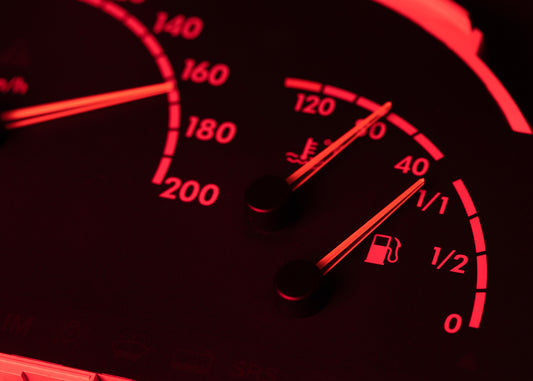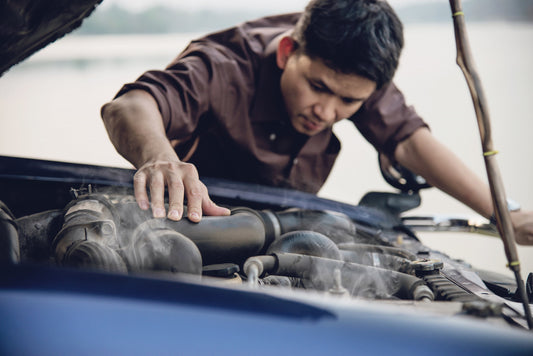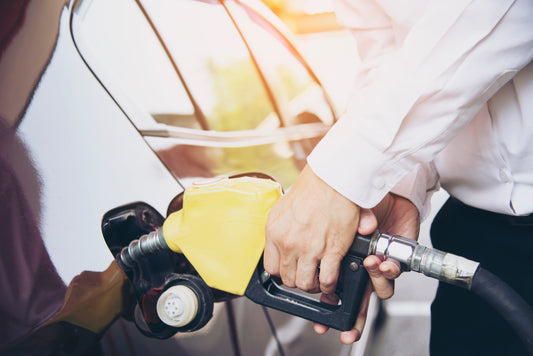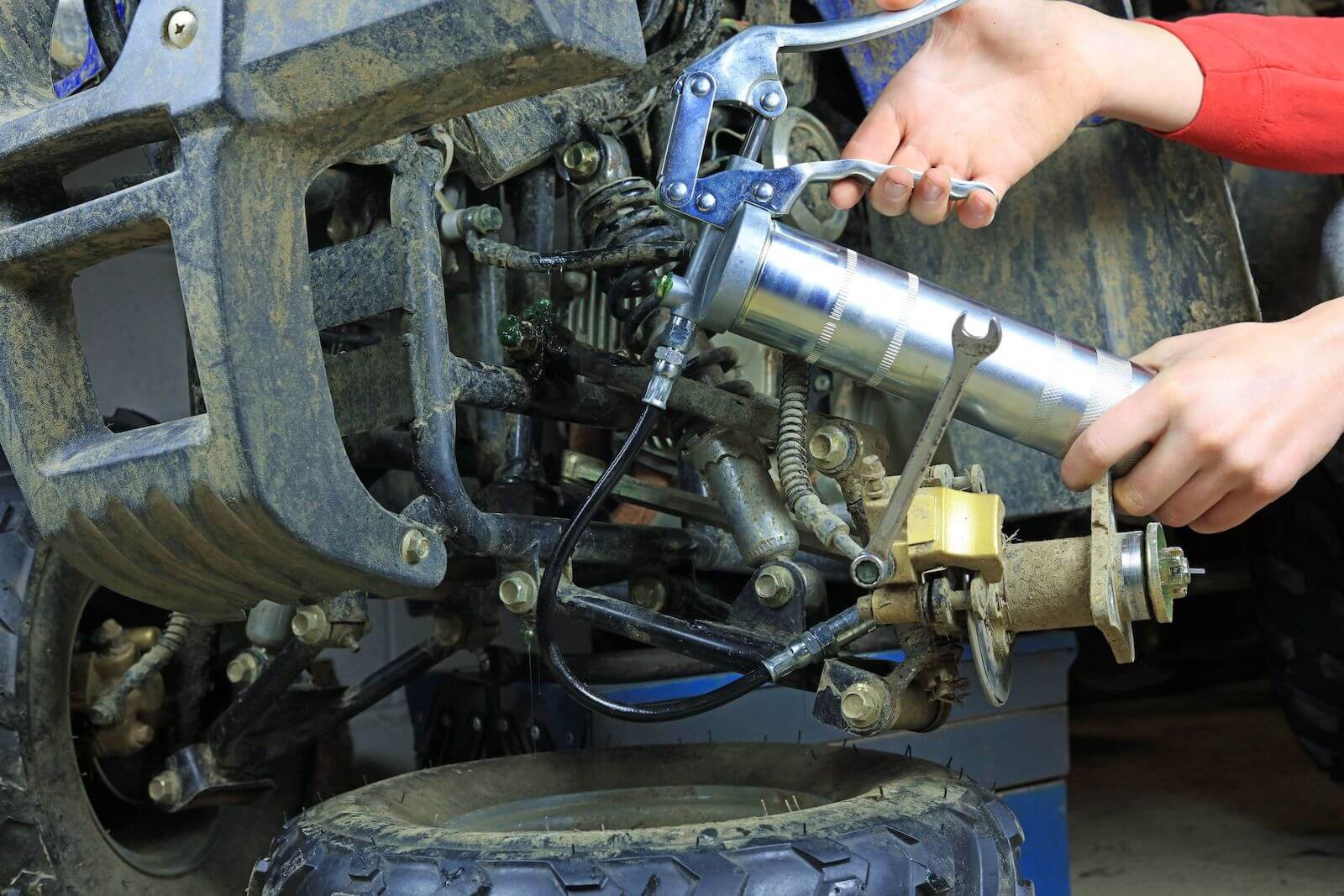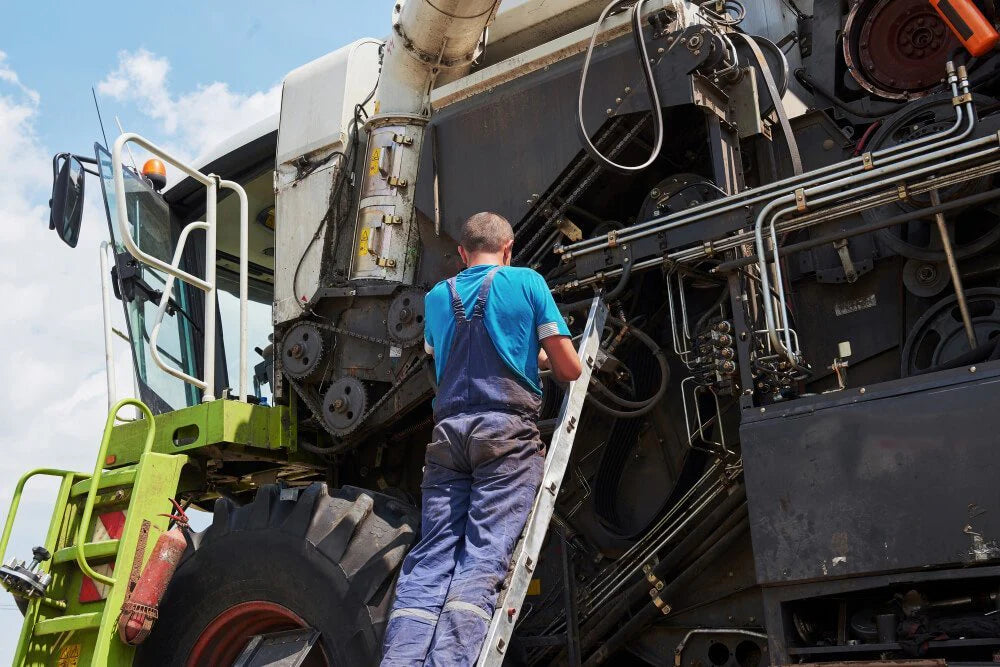Grease gun basics can mean the difference between success and failure. Therefore, it helps to know how to use the gun properly. But what exactly do we mean by grease gun basics? And what are some of the different types of grease guns? Below we answer such important questions pertaining to the topic.
Grease gun basics are defined as the set of fundamental information about grease guns that prospective gun owners need to know before purchasing or using them. So let’s begin with some relevant facts about grease guns that make a valuable piece of equipment for DIY home owners, hobby farmers, trailer owners, boat owners, and small business owners such as, landscaping and construction companies.
When you look at a basic grease gun, it is designed with a tub, plunger, spring, barrel, follower rod, and follower handle. It also includes a lever, hydraulic coupler and flexible type hose. These parts are the basic components. In terms of the grease gun types, know that you can use any one of the several types of guns that are available. However, for the most optimum handling and use, it’s highly recommended to make your selection based on your comfort and level of use.
What are the Different Types of Grease Guns?
The most widely used grease gun types are: pistol-grip, hand-grip, lever, battery-operated and air-powered. However among these, pistol grip is the most popularly used gun and it’s also the most economical of all.
How a Grease Gun is Used that is Operated by Air
When it comes to grease gun basics, you can operate a gun manually or by air or electricity. If the gun is operated by air, it is called a pneumatic grease gun. Therefore, when this type of gun is used then, it is operated by using compressed air and a pistol-type grip. The air flows through the gun when the user pulls the trigger.
Manual Grease Gun Basics
As the name suggests, manual or hand-operated types of grease guns are operated with a hand pump or pistol grip. If the gun has a pistol grip, you can operate the gun with one or both of your hands.
Battery-Operated Models
Another grease gun type is a battery-operated model. These grease guns are also configured with a pistol grip. This type of gun works very much like a gun powered with air. Because the guns are battery operated, they do not feature an electric cord.
Achieve Better Performance from Machinery
Needless to say, when you know how a grease gun is used, you are more likely to realize successful results in the running of your machines.
Understanding the Roles of the Adapters
Adapters are considered main grease gun accessories. For instance, some applications require lubrication in a restricted space. In this case a 90-degree adapter is used for lubrication. On the other hand, a needle-end adapter is used when grease is used in confined spots and you want to employ a precise amount of grease.
Should You Use a Hose or Tube?
Whether you elect to use a flexible hose or a fixed tube on your gun depends on the grease gun type. For example, a gun with a lever would be better adapted to the use of fixed tubes. However, a hose is better suited for lubricating difficult-to-access spots.
Determining the Fitting You Need
The fitting for a grease gun is normally called a Zerk fitting of nipple. A hydraulic fitting is frequently used for lubrication, and is employed in vertical or angled designs. If you wish to supply grease in a tight space then, it is better to select a flush fitting. However, if you plan to use more grease, then a button-head type of fitting will suffice. To avoid damaging a seal, opt for a fitting that is designed for pressure relief.
Maintain the Proper Pressure
If you want to know how a grease gun is used correctly, you have to consider the pressure that is applied as well. For instance, if you are lubricating a bearing seal, you should not use any more pressure than 500 psi. Too much pressure can lead to some damage that can prove to be expensive. So, you need to be a master of the grease gun if you want to make the most of its use.
Some Grease Gun Usage Tips
Again, it cannot be overstated – when you know how a grease gun is used, you can ensure the continual operation of your machinery. Some basic tips should be followed along the way. For example, make sure you protect the pressure assembly on the gun by applying a layer of grease. Do this before inserting the gun’s plunger inside the barrel.
Play It Safe
Also, be careful when you use any of the grease gun attachments. This is because attachments are used to grease openings that are exceptionally small in size. Needles attachments, too, can cut into the skin. So, you want to make sure that you handle these accessories with the utmost care. Any grease that seeps into a cut can lead to a serious infection.
Clean the Nozzle before Use
Make sure you clean the nozzle before you use the gun. In addition you want to ensure that the right type of grease is used. Then squirt a very small bit of grease from the nozzle. Clean up the nozzle with a cloth before you attach it to a fitting.
Focus on the Gun’s Proper Use
While the use of grease gun is often discussed, it does not hurt to review the basics from time to time. Sometimes we forget about some of the risks involved in using a grease gun. That is why it is always essential to make sure you understand how to correctly use the tool.
Equipment that Benefits from Grease Gun Use
Equipment that is regularly serviced and maintained with a grease gun includes the lawn mower, automobile engine, chain saw, and factory-type machinery.
Image Credit:
Photographer:
aidanlong
Grease gun anatomy is a science unique to mechanics and machinists. If you need to use a grease gun for a repair or in your job, it helps to know the make-up of the tool. In order to understand the gun’s construction, the tool needs to be dissected and the types of guns reviewed.
3 Types of Guns
Grease guns are featured in three types of styles with respect to use. Guns can be powered by hand, air, or electricity. Manual or hand-operated guns are made with a pistol or lever grip. The gun you use then depends on the application and personal preference. One major difference in grease gun use is how the gun is loaded. Guns are filled with lubrication by suction fill, bulk, or cartridge.
Manual Grease Guns
The manual grease gun is the most commonly used type of gun. It supplies about 1.28 grams of grease for each pump. The grease is transmitted into an aperture from a hand pump. The manual gun with a pistol grip can be operated by one or two hands. This type of gun provides about .86 grams for each pump.
Pneumatic Grease Guns
The pneumatic grease gun uses a pistol grip and compressed air. The air is directed inside the gun with a hose using a trigger.
Battery-Powered Guns
Grease guns powered by a battery feature a pistol-grip design. Guns of this type work similarly to pneumatic guns. This type of gun is manufactured without a cord.
Why You Should Fully Familiarize Yourself with Grease Gun Anatomy and Use
Understanding grease gun anatomy is essential to using grease as the material clings to engine parts or components without leaking away. Therefore, proper grease gun use should be fully understood. When a technician or mechanic fully understands grease gun anatomy and use, machines and bearings work better as well as last longer.
Grease Gun Couplers, Connectors, and Adaptors
A grease gun normally comes with a standard hydraulic coupler. Adapters may be used as well in the following configurations:
- A 90-degree adapter is typically used for confined spots that require a bend of 90 degrees.
- Needle-end adapters supply a precision amount of grease for tight spots.
- Three-jaw swivel couplers offer various locking positions for numerous applications.
Grease Gun Hoses and Tubes
The choice to use a fixed tube or adaptable hose depends on a machine’s ease of location and the type of gun used. For instance, a hard-to-reach area would benefit from the use of a hose while a lever-style gun would work better with a fixed tube.
Additions
Meters for grease guns can be retrofitted into a gun to maximize lubricant use. The use of plastic caps prevent debris and corrosion. Color-coding the caps can help prevent cross-contamination. Sonic and ultrasonic devices are also available for use.
Fittings for Grease Guns
Fittings for grease guns go by a number of names, including grease nipple, Alemite fitting, or Zerk fitting. The fitting represents the point where the grease connector is attached. The mostly commonly used fitting is the hydraulic grease fitting, which is featured in an angled or upright design. If a large amount of grease is added, a button-head fitting is advised. Flush type fittings are preferred in restricted spaces. A pressure-relief vent fitting is recommended to prevent higher pressures that can lead to damaged seals.
High Pressures
Part of grease gun anatomy involves knowing the proper amount of pressure to apply. A high-pressured manually operated gun delivers from 2,000 to 15,000 psi. Bearing seals should be greased with no more than 500 psi of pressure. So, be careful about applying pressure as too much force leads to collapsed shields on bearings and environmental and safety problems.
Applying Too Much or Not Enough Grease
It is essential to know the precise measure of grease needed for greasing applications. Damaged motor windings and seals, fluid friction, and higher energy consumption result from over-greasing. Increased contamination and fiction wear surface when parts are under-greased.
A Review of Grease Gun Anatomy
Manual Designs
In manual designs, the lever of a grease gun is used for hand-pumping the grease from the gun’s barrel into a tube or hose. The trigger and handle are used in manual grease guns in the same way. The barrel of the gun is the exoskeleton of the gun and contains the grease tub or grease that is derived from bulk storage. The grease tube or cartridge is a type of housing that is replaced when the grease has been used.
Operational Fittings
The hydraulic connector or coupler of the gun is a linking point that holds a fixed tube or hose that is affixed to the grease gun’s head. The filler nipple represents the grease injection point from a filler pump. An air-release nipple permits the escape of air after the lubricant has been added to the gun and pumped into its head. The spring on the gun supplies the pressure onto the plunger.
Rods and Handles
The follower rod assists the plunger maintain a uniform direction as it holds pressure on the bottom part of the tube of grease. The rod is also used to pull back the spring before the insertion of a new tube. The follower handle offers holding power when the follower rod or plunger rod is pulled before tube insertion. A fixed tube may be used interchangeably with a hose to ease the use and positioning of a coupler or connector. Fixed tubes are inflexible forms of hoses.
Image: Source




